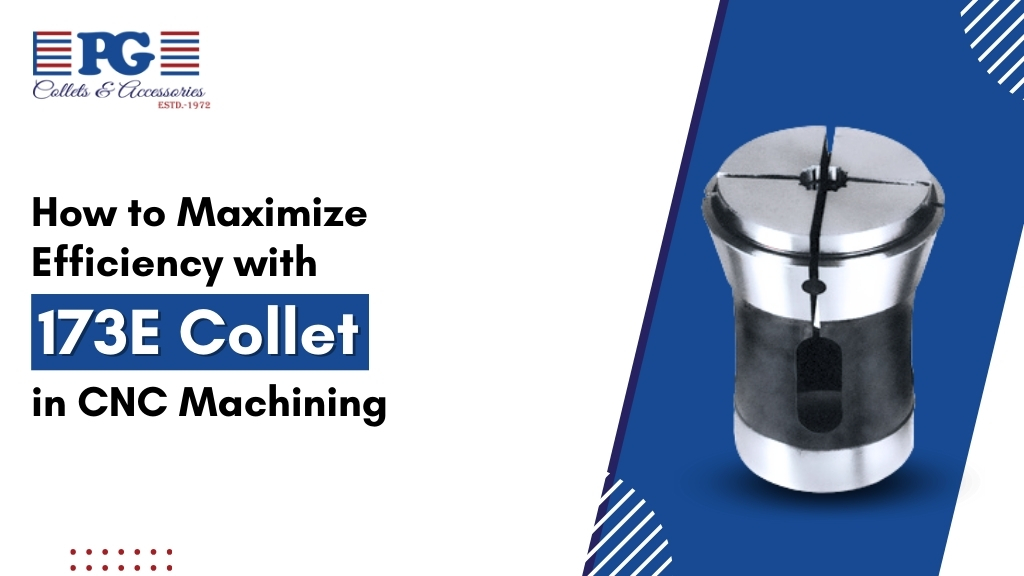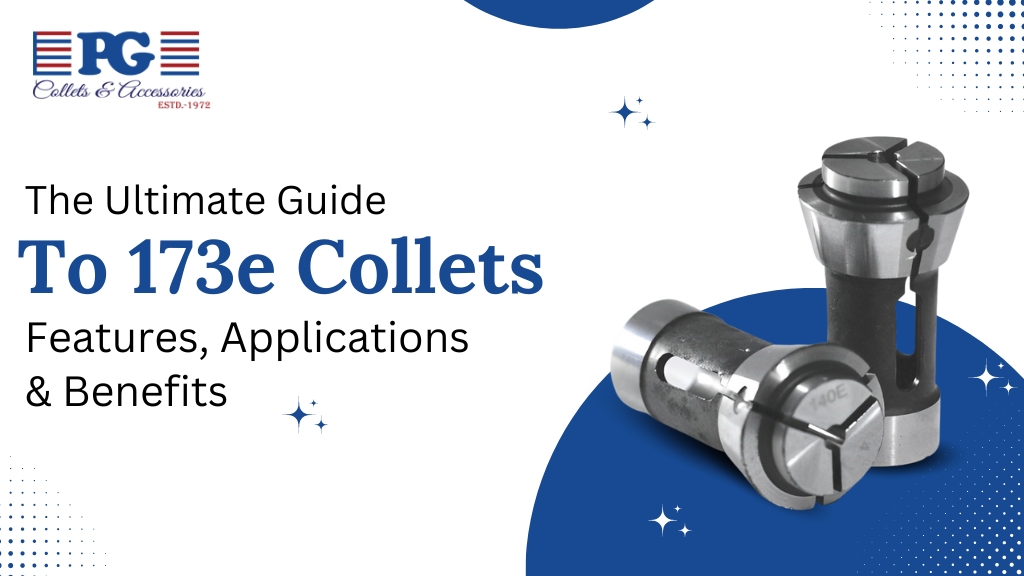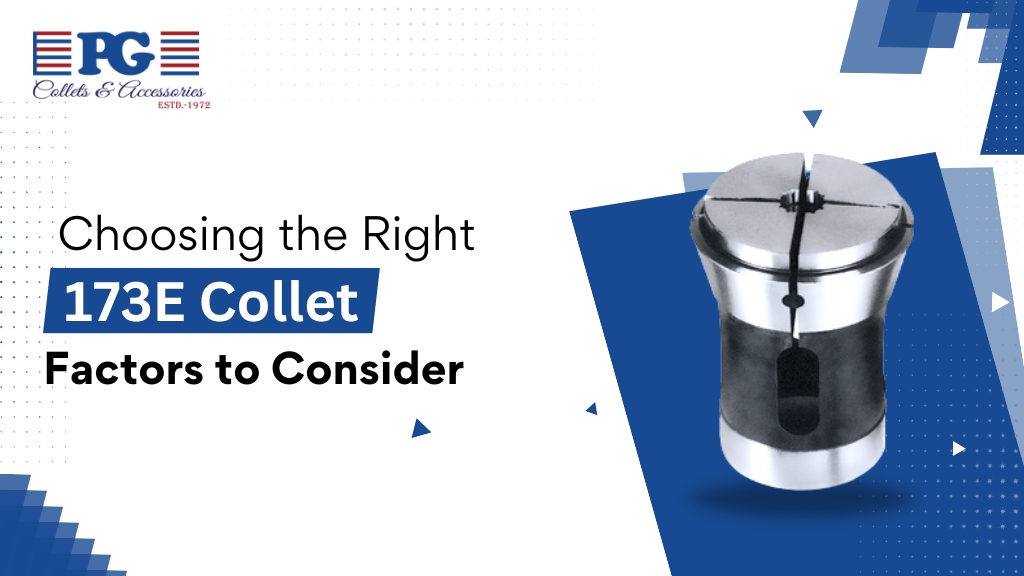In the world of CNC machining, precision and efficiency are paramount. The tools and components used can make a significant difference in the outcome of a project, and one such critical component is the collet. Specifically, the 173E collet stands out as a versatile and essential tool in achieving high-efficiency machining. This article delves into the importance of 173E collets, their application in CNC machining, and how they can be utilized to maximize efficiency.
Understanding the 173E Collet
What is a 173E Collet?
A collet is a specialized type of chuck that forms a collar around a tool or workpiece to hold it securely in place. The 173E collet is a specific type of collet, known for its precision and reliability. It’s widely used in CNC (Computer Numerical Control) machining, where accuracy and stability are crucial.
Design and Features of 173E Collet
The 173E collet is designed with high precision in mind. It typically features a cylindrical shape with slits along its length, allowing it to compress tightly around the tool or workpiece. The design ensures that the collet can grip the tool firmly, minimizing runout and maximizing concentricity.
Key features of 173E collet include:
- High Precision: The 173E gripping collet is engineered to provide a tight grip on the tool, reducing any movement during machining and ensuring precise cuts.
- Versatility: These collets are compatible with a wide range of tools and machines, making them a popular choice in various CNC applications.
- Durability: Made from high-grade materials, 173E tool holder are designed to withstand the rigors of continuous use, providing long-lasting performance.
The Role of 173E Collet in CNC Machining
Enhancing Tool Stability
One of the primary roles of the 173E gripping collet in CNC machining is to enhance tool stability. In CNC operations, the tool’s stability directly impacts the accuracy of the machining process. Any slight movement or vibration can result in deviations from the desired specifications, leading to errors and material waste.
The 173E tool holde tight grip on the tool ensures minimal movement during operation. This stability is crucial when working with high-speed CNC machines, where even the slightest deviation can lead to significant errors.
Improving Machining Precision
Precision is a key factor in CNC machining, and the 173E collet plays a critical role in achieving it. By holding the tool securely, the collet ensures that cuts are made precisely according to the programmed path. This precision is particularly important in industries where exact measurements are required, such as aerospace, automotive, and medical device manufacturing.
Reducing Tool Runout
Tool runout is a common issue in CNC machining, where the tool’s axis is not perfectly aligned with the spindle. This misalignment can lead to uneven cuts, poor surface finishes, and increased tool wear. The 173E collet, with its precise design, helps minimize runout by ensuring the tool is perfectly centered within the spindle. This reduction in runout leads to better quality cuts and extends the life of the tool.
Maximizing Efficiency with 173E Collet
Selecting the Right 173E Collet
The first step in maximizing efficiency with 173E collets is selecting the right collet for your specific application. The size and type of the tool, as well as the material being machined, will dictate the appropriate collet. It’s essential to choose a 173E gripping collet that matches the tool shank size to ensure a secure grip and minimize any potential movement.
Proper Installation and Maintenance
Efficiency in CNC machining is not only about the tools used but also about how they are installed and maintained. The 173E collet must be installed correctly to function optimally. This includes ensuring that the collet is clean, free from debris, and properly aligned with the spindle.
Regular maintenance is also crucial. Over time, collets can wear down, leading to reduced gripping force and precision. Regular inspection and replacement of worn-out collets will help maintain efficiency in the machining process.
Optimizing Machining Parameters
To get the most out of 173E collets, it’s essential to optimize the machining parameters. This includes adjusting the spindle speed, feed rate, and depth of cut to match the capabilities of the collet and the tool. By fine-tuning these parameters, you can achieve the best possible balance between speed and precision, leading to more efficient machining.
Balancing Speed and Precision
While speed is important in CNC machining, it should not come at the expense of precision. The 173E collet allows for high-speed machining while maintaining precision, but it’s essential to find the right balance. Overloading the collet with excessive speed or force can lead to tool slippage, reduced precision, and potential damage to the collet itself. By carefully balancing speed and precision, you can maximize both the efficiency and quality of your machining operations.
Advantages of Using 173E Collet
Increased Productivity
One of the main advantages of using 173E collets in CNC machining is increased productivity. Their ability to hold tools securely at high speeds allows for faster machining without sacrificing precision. This increased speed translates to shorter production times and higher throughput.
Enhanced Tool Life
The secure grip provided by 173E collets reduces tool wear, leading to longer tool life. By minimizing runout and vibration, the collet ensures that the cutting edge remains sharp for longer periods, reducing the need for frequent tool changes and associated downtime.
Improved Surface Finish
Surface finish is a critical aspect of CNC machining, particularly in industries where aesthetics or surface functionality are important. The precision and stability offered by 173E collets result in smoother cuts and better surface finishes, reducing the need for additional finishing operations.
Versatility Across Applications
The versatility of 173E collets makes them suitable for a wide range of applications. Whether you’re working with metals, plastics, or composites, these collets provide the precision and reliability needed for efficient machining. Their compatibility with various tools and machines further enhances their value in diverse CNC operations.
Common Challenges and Solutions
Tool Slippage
Despite the high precision of 173E collets, tool slippage can still occur if the collet is not properly maintained or if the wrong size is used. To prevent slippage, ensure that the collet is regularly inspected for wear and that it matches the tool shank size. If slippage persists, consider using a different collet size or type better suited to your application.
Wear and Tear
Like all tools, 173E collets are subject to wear and tear over time. Regular maintenance, including cleaning and inspection, is essential to prolong the life of the collet. If wear is detected, the collet should be replaced promptly to maintain machining efficiency.
Misalignment
Misalignment between the collet and the tool can lead to reduced precision and increased tool wear. To avoid this, ensure that the collet is properly aligned with the spindle during installation. Using high-quality collets and following the manufacturer’s installation guidelines can help minimize misalignment issues.
The Future of 173E Collet in CNC Machining
As CNC machining technology continues to evolve, so too will the tools and components used. The 173E collet is likely to remain a staple in the industry due to its precision, reliability, and versatility. Future developments may include advancements in collet materials, coatings, and designs to further enhance performance and efficiency.
Innovations in Collet Design
Manufacturers are constantly seeking ways to improve collet performance. Innovations such as enhanced gripping mechanisms, improved materials, and advanced coatings are on the horizon. These innovations will likely increase the durability and efficiency of 173E collets, making them even more effective in CNC machining.
Conclusion
The 173E collet is an indispensable tool in CNC machining, offering the precision, stability, and versatility needed to achieve high-efficiency machining. By selecting the right collet, ensuring proper installation and maintenance, and optimizing machining parameters, you can maximize the efficiency of your CNC operations. As technology continues to advance, the High-precision collet will likely remain at the forefront of CNC machining, contributing to improved productivity, enhanced tool life, and better-quality finishes.




